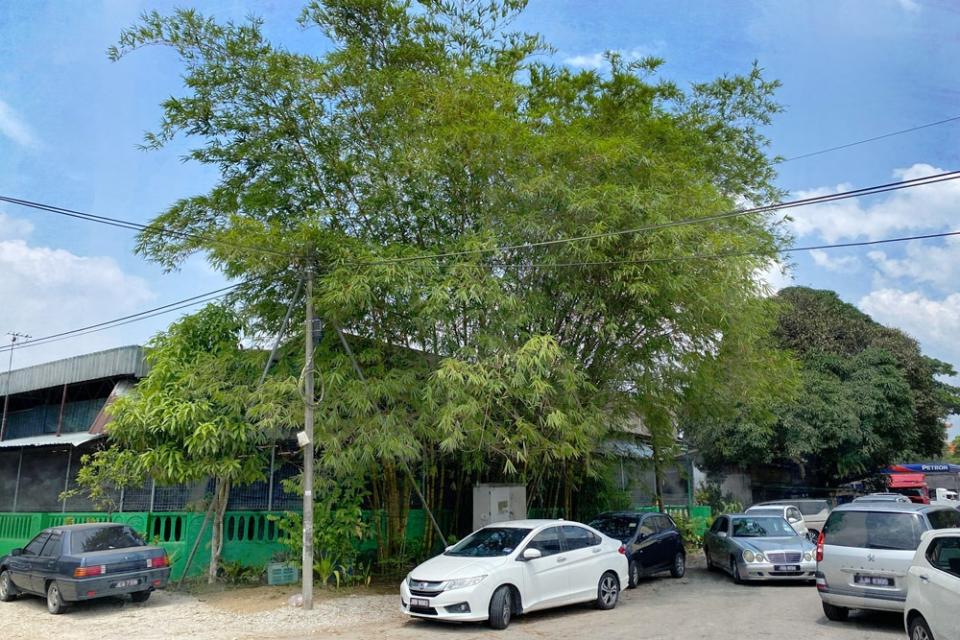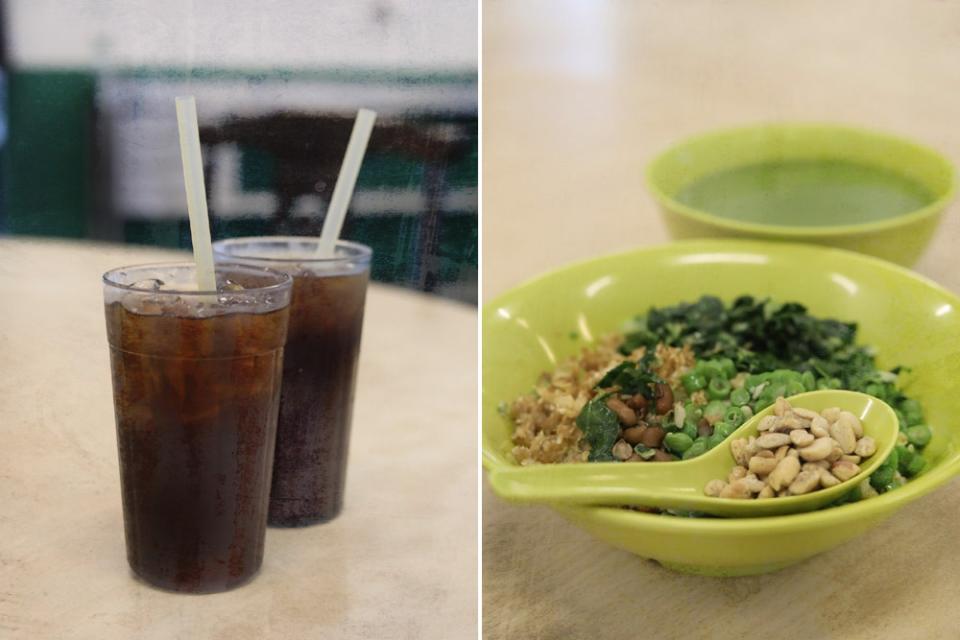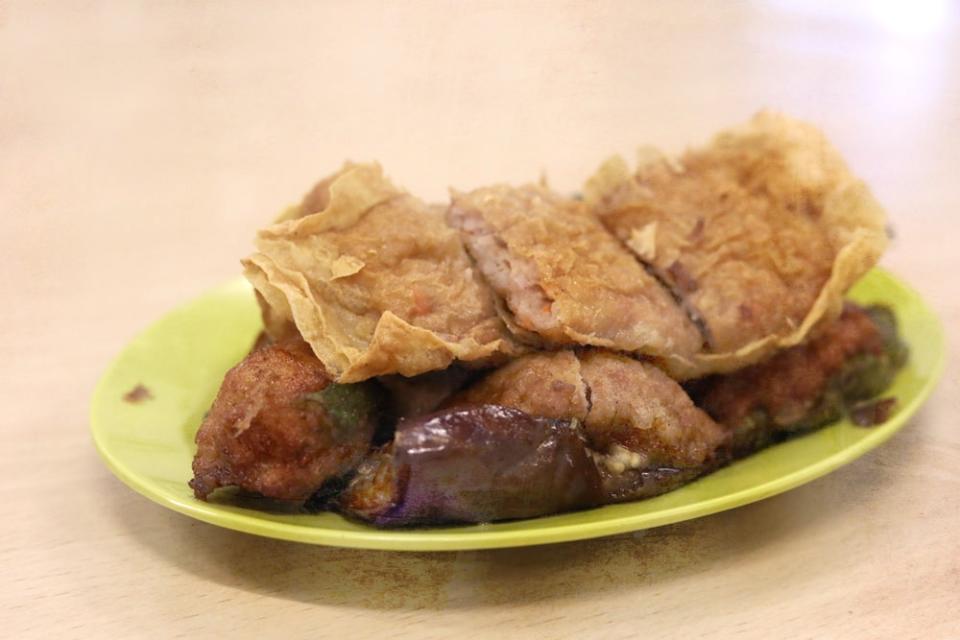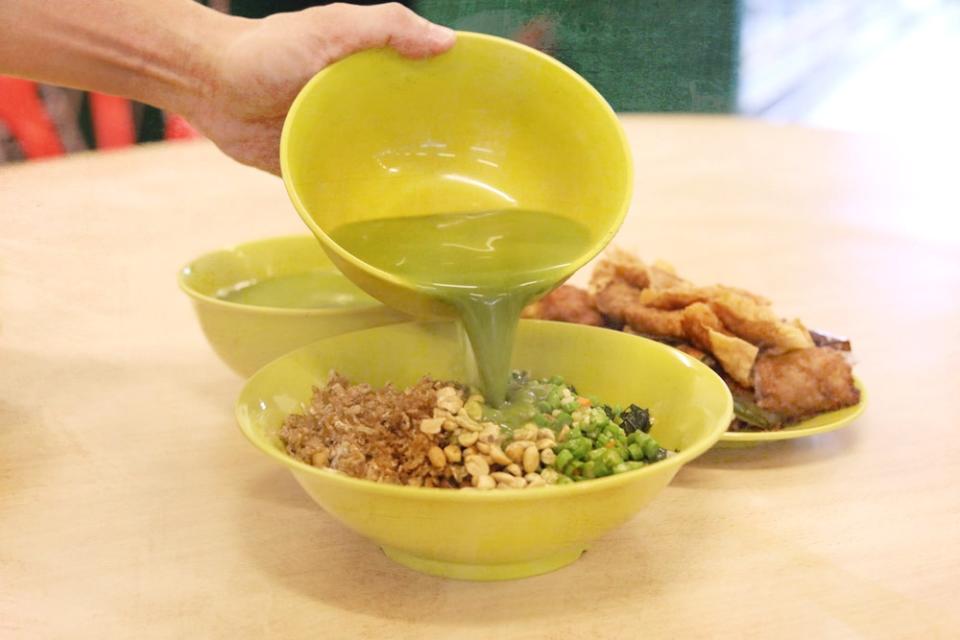‘Lei cha’ in Kulai: Enjoy your emerald bowl of ‘thunder tea under the big tree’

KULAI (Johor), Aug 5 — “Look out for the big tree.”
That’s basically the advice most locals offer when you ask them where to find the best lei cha in Kulai. It’s like looking for the pot of gold at the end of the rainbow (leprechauns and lei cha are both green, of course, so perhaps there’s a connection).
But let’s backtrack a little.
Why even look for lei cha — a traditional Hakka dish made from ground tea leaves, herbs as well as roasted nuts, seeds and grains — in Kulai, of all places?
Well, for the more well-informed, Kulai is renowned for lei cha (or “thunder tea”) due to the town’s sizeable Hakka population.
The same way Melaka is known for its famous chicken rice balls and Ipoh for its nga choi gai (bean sprout chicken), visitors clamour to locate the best.
Naturally, a sure-fire way to determine “the best” (a subjective notion most of the time) is to ask the townspeople where they go for their fix.

You can spot the restaurant under the big tree which gives it its nickname.
And so we find ourselves here in Kulai’s Taman Nam Tak, navigating the narrow lanes between car workshops to find a parking space. Every motorist in the neighbourhood seems to be attempting the exact same challenge but somehow everyone figures it out in the end.
At the epicentre, where the lanes intersect, is the big tree we were told to look out for, its branches threatening to engulf the restaurant beneath it.
Indeed, the signage is so time-worn, we now understand why everyone refers to this spot simply as Gǔlái Dàshù Xià Léi Chá (literally “Kulai’s Under the Big Tree Lei Cha”).
It’s not obvious that this is a lei cha restaurant when you first enter. For you are greeted by a long counter with an even longer queue of customers waiting to choose from a wide array of yong tau foo.

An array of different 'yong tau foo' to choose from.
That’s right, yong tau foo.
Another popular offering here is Hakka style yong tau foo, and half of those waiting in line won’t be dining in; they are grabbing their favourite stuffed treats for takeaway, to enjoy in the comforts of their own homes.
There are stuffed chillies and okra. Eggplant and bitter gourd. Tofu and bean curd skin. Truly, a feast of yong tau foo delights.
It’s a simple procedure: Aside from selecting your yong tau foo, you also order your lei cha and drinks here. Then off you head to the main area of the restaurant where there are tables aplenty.

Cool off with iced 'liong cha' (herbal tea) before tucking into your 'lei cha'.
Find your table and the servers will deliver the lei cha and drinks straight from the kitchen.
The yong tau foo can only be purchased at the front counter though; these are fried in small batches so they remain crispy and disappear quickly thanks to the eager (and very hungry, one imagines) takeaway customers.
Which is why sometimes you see some dine-in customers making a beeline for the counter when they see new trays of yong tau foo emerging from the kitchen.
It’s a very democratic process, and sort of reminds one of the trolleys piled high with small bamboo steamers in a dim sum restaurant during morning rush hour; act swiftly or be left with nothing on your plate.

A platter of freshly fried 'yong tau foo'.
Once seated, we cool off with iced liong cha (herbal tea). Soon our server brings over our bowls of lei cha. Or, to be more precise, half of what makes a complete lei cha.
These green melamine bowls are filled with a bed of rice, deep fried jiǔcéngtǎ (“nine-layered pagoda” or Chinese basil), stir fried long beans, preserved turnips, red beans and a spoonful of pale roasted peanuts.
If these are the dry ingredients, then we are only missing the “wet” ingredient. Another server comes over with a canister of hot green broth that she pours into individual bowls for us.
This green broth is typically made from some of the same items as the dry ingredients, including jiǔcéngtǎ and roasted peanuts. Other requisites include tea leaves, toasted sesame seeds, mint, cilantro and bitter lotus hearts.
But as every Hakka family’s lei cha recipe is a closely guarded secret, only the restaurant owners would know the exact ingredient list and quantities.

Pour the hot green broth into the bowl of rice and chopped ingredients for a complete 'lei cha'.
What we do know is that the resultant broth is as smooth as soy milk and as green as emerald. With a platter of freshly fried yong tau foo (the one thing that distinguishes one table from the next as every diner has their own preferred selection), we are ready to tuck in.
We pour the hot green broth into the bowl of rice and chopped ingredients for a complete lei cha. A little at a time so that every spoonful is different.
Full of fibre, it certainly tastes healthy. But if we worry that we are being too saintly with our lunch, we need only pick a morsel of fried yong tau foo with our chopsticks and devour that.
Ah, once more there is balance with the Force. Maybe this is what our ancestors meant when they exhorted us to eat a balanced meal.
“Under the Big Tree” Lei Cha 古来大樹下擂茶
Off Jalan Susur Kulai 5, Taman Nam Tak, Kulai, Johor
Open daily (except Thu closed) 10am-3pm
For more slice-of-life stories, visit lifeforbeginners.com.
* Follow us on Instagram @eatdrinkmm for more food gems.



